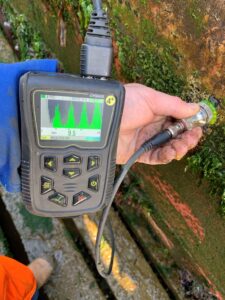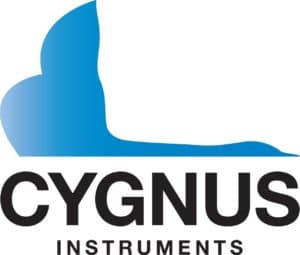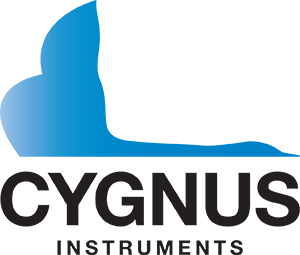Ultrasonic Thickness Gauge Calibration Procedure
Welcome to Cygnus Instruments, the leading provider of ultrasonic thickness gauges and comprehensive support solutions. With over 35 years of experience, we pride ourselves on delivering high-quality products and exceptional customer service to industries worldwide.
At Cygnus Instruments, we understand the criticality of accurate thickness measurements in various applications, from marine and offshore to oil and gas, construction, and many more. Our ultrasonic thickness gauges are meticulously designed to provide precise and reliable results, ensuring the integrity and safety of your assets.
We go beyond simply offering top-notch products. Our commitment to customer satisfaction extends to our comprehensive after-sales support, which includes calibration services for your devices.
When you choose Cygnus Instruments, you gain a trusted partner that prioritizes your success and asset protection. Experience the Cygnus difference today by calling us at +1 346 223 0415.
Importance of Proper Calibration for Ultrasonic Thickness Gauges

During the calibration procedure, the device is adjusted to match known standards, including calibrating the transducer and verifying measurement accuracy. Regular calibration is essential to detect flaws accurately and make informed decisions.
What is Ultrasonic Thickness Gauge Calibration?
Ultrasonic thickness gauge calibration is a crucial process that guarantees the accuracy and reliability of devices used to measure material thickness. It involves comparing the readings of a thickness gauge to known calibration standards, ensuring precise measurements.
During the calibration procedure, the transducer, responsible for emitting and receiving sound waves, undergoes careful calibration to maintain accuracy. This meticulous process ensures that the gauge meets industry standards and consistently delivers reliable results.
Equipment and Tools Required for Ultrasonic Thickness Gauge Calibration
Ultrasonic thickness gauge calibration demands specific equipment and tools to achieve accurate and reliable results. This meticulous process involves calibrating the gauge to meet industry standards and maintain measurement integrity.
To conduct ultrasonic thickness gauge calibration effectively, several key equipment and tools are required:
- Calibration Blocks: Precision-engineered blocks with known thickness values for comparison with gauge readings, facilitating calibration adjustments.
- Precision Weights: Applied to the transducer to ensure consistent coupling and accurate measurements by exerting controlled pressure.
- Transducer Calibration Fixture: Securely holds the transducer, enabling precise positioning and calibration adjustments.
- Couplant: A gel or liquid medium applied between the transducer and test material to enhance sound wave transmission for optimal measurement accuracy.
- Multimeter: Verifies the electrical performance of the gauge, ensuring compliance with calibration standards.
- Calibrated Micrometer: Measures the thickness of calibration blocks, verifying their accuracy.
At Cygnus Instruments, our qualified engineers utilize state-of-the-art equipment and tools for ultrasonic thickness gauge calibration. Trust our expertise to provide exceptional calibration services, ensuring consistent and trustworthy measurement results.
Preparing for Calibration: Precautions and Safety Measures
Safety and precautions play a crucial role in ultrasonic thickness gauge calibration, guaranteeing accurate results and a secure working environment. Before initiating the calibration process, it is vital to understand the recommended procedure outlined by the gauge manufacturer, including calibration standards and specific requirements.
Proper preparation of the test material is essential to achieve precise measurements during calibration. Thoroughly clean the surface, removing debris, contaminants, and coatings that could affect readings.
To prioritize safety, wear suitable personal protective equipment (PPE) such as safety goggles, gloves, and a lab coat. Well-lit calibration areas with unobstructed access ensure accurate readings and minimize errors.
Cygnus Instruments values safety and provides comprehensive guidelines for calibration procedures. Trust our expertise to navigate a safe calibration process, ensuring accurate measurements and adherence to calibration standards while prioritizing your well-being.
Step-by-Step Calibration Procedure for Ultrasonic Thickness Gauges
Calibrating an ultrasonic thickness gauge is a systematic process that guarantees accurate and reliable measurements. Here’s a step-by-step guide to effectively calibrate your gauge:
- Equipment Preparation: Ensure cleanliness and remove any debris from the gauge, transducer, and calibration blocks.
- Select Calibration Standards: Choose calibration blocks with known thicknesses covering the measurement range.
- Adjust Gauge Settings: Set appropriate parameters such as sound velocity based on the test material.
- Zero Calibration: Compensate for any reading variation or offset by zeroing the gauge.
- Perform Calibration: Place the transducer on the calibration block, take multiple readings, and compare them to the known thicknesses.
- Adjust Settings: Make necessary gauge adjustments to align readings with calibration standards.
- Verify Accuracy: Verify calibration by repeating the process with different calibration blocks.
- Record Data: Document calibration results, including readings and adjustments.
- Certification and Traceability: Ensure adherence to relevant standards and use traceable calibration equipment.
Verification and Adjustment of Calibration Standards
Verification and adjustment of calibration standards play a vital role in achieving precise measurements during ultrasonic thickness gauge calibration. Calibration standards act as reference points against which gauge readings are compared, allowing for accurate verification and adjustment if needed.

During the calibration process, calibration standards undergo thorough verification to ensure their accuracy. This involves rigorous testing and evaluation to establish their reliability as measurement benchmarks.
If any deviations or inconsistencies are detected, adjustments are made to align the calibration standards with recognized industry benchmarks. This meticulous approach ensures that the standards remain dependable and accurate.
At Cygnus Instruments, our experienced engineers follow stringent procedures to verify and adjust calibration standards, guaranteeing the highest level of precision in ultrasonic thickness gauge calibration. By utilizing reliable and accurate standards, we enhance the integrity of your measurements during inspections and tests.
Troubleshooting Common Issues in Ultrasonic Thickness Gauge Calibration
Calibrating ultrasonic thickness gauges is crucial for accurate measurements, but it can encounter certain challenges. Troubleshooting these common issues is vital to maintain calibration integrity and ensure reliable results.
One common problem is misalignment of the transducer during calibration, leading to inaccurate readings. Properly positioning and securing the transducer is essential for optimal performance.
Contamination, such as air gaps or couplant residue, between the transducer and the test material can disrupt sound wave transmission and cause measurement errors. Thoroughly cleaning the transducer and eliminating air gaps is necessary to overcome this challenge.
Calibration drift is another concern, as gauges may deviate from calibration standards over time. Regular recalibration and adherence to recommended intervals help address this issue.
Proper training and understanding of the calibration procedure are essential to prevent errors. Having knowledgeable personnel who follow industry standards is crucial.
At Cygnus Instruments, our expert team specializes in troubleshooting these issues, providing comprehensive ultrasonic thickness gauge calibration services.
How Do I Know If My Ultrasonic Thickness Gauge Is Due for Calibration?
Regular calibration is crucial to ensure accurate and reliable measurements with your ultrasonic thickness gauge. How do you know when it’s time for calibration? Look for indicators such as inconsistent readings, significant variations, or inconsistencies in the measurements.
Environmental changes, including temperature, humidity, and vibrations, can also impact gauge accuracy, so if your gauge has been exposed to extreme conditions or experienced environmental shifts, consider calibration. Check your gauge’s user manual or consult the manufacturer for recommended calibration intervals.
Additionally, specific industries may have their own calibration standards for compliance. Adhering to these standards is essential to meet regulatory requirements and maintain measurement accuracy. Prioritize calibration to optimize your gauge’s performance and ensure dependable results.
What Are the Standards for Ultrasonic Thickness Gauge?
Ultrasonic thickness gauges operate according to specific standards to ensure accurate calibration and measurements. These standards govern the calibration process, accuracy requirements, and performance criteria for these gauges.
During calibration, the device is compared to known standards, verifying its precision. Compliance with these standards guarantees measurement integrity and reliable results in applications like weld inspection and paint thickness measurement.
What Is the Maximum Range of Ultrasonic Thickness Gauge?

The maximum range of an ultrasonic thickness gauge refers to its capacity to accurately measure thickness. This range varies across models and manufacturers. Factors such as transducer frequency, unit power, and calibration standards influence the maximum range. Higher frequencies are suitable for thinner materials, while lower frequencies accommodate thicker ones.
What Is the Tolerance of Ultrasonic Thickness Gauge?
Ultrasonic thickness gauge tolerance refers to the acceptable range of measurement deviation. It represents the maximum allowable difference between the gauge’s readings and the actual material thickness.
Calibration aligns the gauge with industry standards to ensure measurements fall within the specified tolerance range, guaranteeing accuracy. The tolerance can vary depending on the application and industry requirements. Regular calibration is essential for maintaining adherence to these tolerances.
At Cygnus Instruments, our calibration procedures meet stringent standards, ensuring your gauge remains within the required tolerance levels. Understanding and adhering to ultrasonic thickness gauge tolerance enables precise and consistent results for weld inspection, tube inspection, and paint thickness measurement, supporting informed decision-making.
Contact Us Today!
Take the next step towards accurate measurements and reliable inspection results with Cygnus Instruments. Contact us today to discuss your ultrasonic thickness gauge calibration needs.
Our team of experts are ready to assist you. Give us a call on +1 346 223 0415 to speak directly with our knowledgeable staff. We’re here to answer your questions and provide guidance on the ultrasonic thickness gauge calibration procedure.
If you prefer to communicate in writing, you can reach us through our convenient contact form or by sending an email to sales@cygnus-instruments.com. Simply fill in your details and inquiry, and we will respond promptly to your request.
Whether you need calibration services, product information, or technical support, our team is dedicated to delivering the highest level of customer service.
Don’t settle for inaccurate measurements. Contact Cygnus Instruments today and experience the excellence of our calibration services and comprehensive support.


